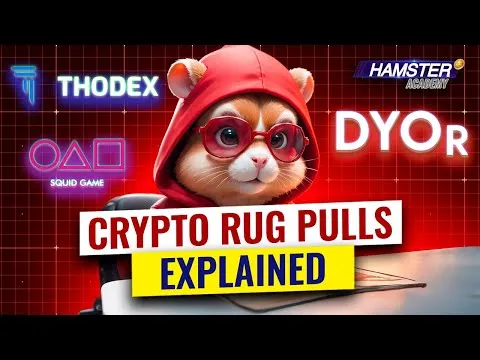The world of cryptocurrency offers exciting possibilities for earning income, but like any new frontier, it also holds hidden risks. For beginners, the first and most crucial step toward earning in crypto isn't about finding the next big coin; it's about safeguarding your initial capital by understanding and avoiding common pitfalls. Think of it as building a strong foundation before you try to build a skyscraper of wealth.
Understanding the Pitfalls: Common Crypto Scams
Sadly, not every shiny new crypto project is as trustworthy as it seems. Some are designed by bad actors looking to exploit eager investors. Here are the most common types of scams you need to be aware of:
- Rug Pulls: Imagine someone inviting you to a party on a beautiful, new rug. Everyone puts money down, the rug fills up, and just when the party's at its peak, the host pulls the rug out from under everyone, running off with all the money! In crypto, this is a "liquidity pull." Project creators launch a token, build hype, collect investor funds, and then suddenly disappear, leaving investors with worthless tokens and no way to get their money back.
- Pump and Dump Schemes: This scam involves artificially inflating the price of a token. Scammers buy up a large amount of a low-value token, then spread false information or create intense hype (the "pump") to encourage others to buy in, driving the price up. Once the price hits their target, they quickly sell off all their holdings (the "dump"), causing the price to crash and leaving late investors with massive losses.
- Exit Scams: Similar to rug pulls but often involving a seemingly more established project or exchange. The creators build trust and gather a large amount of investor funds over time. Then, one day, they shut down the platform or project, vanishing with all the collected assets. Investors are left with no access to their funds and often no recourse.
Your Path to Safer Earning: Key Due Diligence Steps
Now that you know what to avoid, let's look at actionable steps to identify more legitimate opportunities. These are your intermediate steps to navigate the crypto landscape safely and find projects where genuine earning potential exists.
- Investigate the Project's Developers: Reputable projects are usually built by transparent teams. Research the people behind the project. Do they have a public presence (LinkedIn, GitHub, etc.)? Do they have a proven track record in the blockchain space? A lack of identifiable founders or a team using fake identities is a massive red flag. Always question anonymous teams, especially for significant investments.
- Look for Liquidity Locks: A crucial safety measure for decentralized finance (DeFi) projects is a "liquidity lock." This means a significant portion of the project's tokens and their paired assets (like Ethereum or Bitcoin) are locked away in a smart contract for a set period, often 3-5 years. This prevents the project creators from suddenly withdrawing all the funds and executing a rug pull. If there's no liquidity lock, or it's for a very short period, be extremely cautious.
- Understand Token Distribution: How are the tokens distributed? If a very small number of wallets hold a massive percentage (e.g., over 5%) of the total token supply, it poses a high risk. These "whale" holders, often the project creators, can easily manipulate the token's price by selling off their large holdings. Use a "block explorer" (a public tool to view blockchain transactions) to check token distribution. A widely distributed token among many holders is generally a healthier sign.
- Test Sellability: Before making a large investment, try buying a small amount of the cryptocurrency and then immediately try to sell it. Some scam projects include "anti-dump mechanisms" in their code that prevent users from selling their tokens, even if the price is high. If you can't sell or face unusual restrictions, that's a clear warning sign. Legitimate projects allow free buying and selling.
- Practice "Do Your Own Research" (DYOR) Relentlessly: This is the golden rule of crypto investing. Don't rely solely on hype or social media trends. Dive deep into the project's whitepaper (their technical document outlining the project), its roadmap, community engagement, and social media channels. Look for consistent communication, active development, and genuine community interaction, not just buzz. Pay attention to how the team responds to questions and criticism. A strong, responsive community and transparent communication are good indicators.
Staying vigilant and performing thorough due diligence might seem like a lot of work, but protecting your financial future in the fast-paced world of crypto is paramount. Imagine a future where blockchain technology is so integrated into our lives that everything from your coffee loyalty points to your house deed is a token. If you master these principles now, you're not just safeguarding your current investments; you're building the financial literacy to thrive in that complex, tokenized future, always one step ahead of anyone trying to pull the digital rug from under you.
